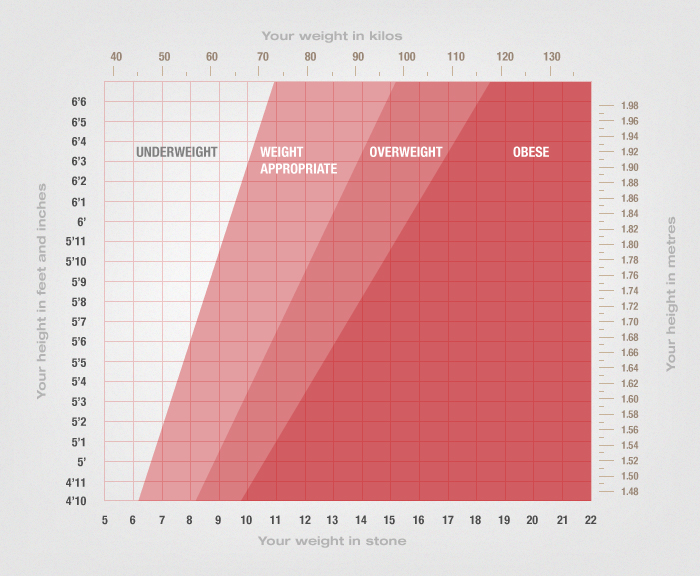The body mass index measurement is the calculation of your body weight in relation to your height and is commonly used as an indicator of whether you might be in a risk category for health problems caused by your weight. Using a BMI calculator such as the one on this page, you enter your weight and height measurements. Those figures are entered into the BMI formula to produce your current BMI reading. BMI is not the most reliability indicator of your health but it still gives a decent idea if you need to do something about it.
A calorie can be defined as a unit of energy supplied by food. Whether you're eating carbohydrates, fats, sugars, or proteins, Calories are everywhere. The total number of calories you consume and burn in 24 hours is what determines your weight. So keep an eye on those calories you’re packing in everyday, because they count!
Within a healthy, balanced diet, a man needs around 10,500kJ (2,500kcal) a day to maintain his weight. For a woman, that figure is around 8,400kJ (2,000kcal) a day. These values can vary depending on age, metabolism and levels of physical activity, among other things.
Waist–hip ratio or waist-to-hip ratio (WHR) is the ratio of the circumference of the waist to that of the hips. This is calculated as waist measurement divided by hip measurement (W ÷ H). For example, a person with a 30″ (76 cm) waist and 38″ (97 cm) hips has a waist–hip ratio of about 0.79.
The WHR has been used as an indicator or measure of health, and the risk of developing serious health conditions. WHR correlates with fertility (with different optimal values for males and females).

Check your weight against your height on the chart below to see if you fall within the ideal weight for height zone